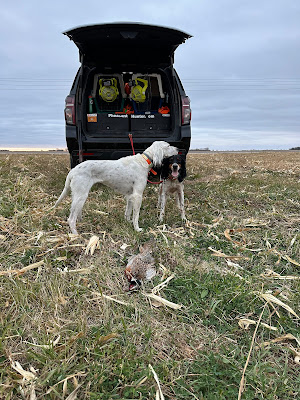Winter pheasant hunting presents unique challenges and opportunities for hunters. As the landscape changes and bird behavior shifts with the cold weather, successful pheasant hunting requires careful preparation, strategic thinking, and specialized techniques.
1. Dress for Extreme Conditions
Winter hunting demands proper clothing. Layer your attire with moisture-wicking base layers, insulating mid-layers, and a waterproof, windproof outer shell. Thermal camouflage gear helps you stay warm while remaining concealed. Don't forget insulated, waterproof boots, thick wool socks, and hand warmers to protect against freezing temperatures.
2. Understand Winter Bird Behavior
During winter, pheasants conserve energy and seek shelter in dense cover. They congregate in areas with thick grass, cattails, shelterbelts, and brushy draws that provide protection from wind and cold. Focus your hunting efforts around these habitat types, especially during harsh weather conditions.
3. Hunt During Optimal Times
Pheasants are most active during midday when temperatures are slightly warmer. Unlike fall hunting, winter birds tend to move less and concentrate in smaller areas. Plan your hunting trips between 10 AM and 2 PM when birds are more likely to be out searching for food and sunlight.
4. Use the Right Shotgun and Ammunition
Cold weather hunting requires reliable equipment. Choose a shotgun that performs well in low temperatures and use modified or full chokes for longer, more accurate shots. Select heavier loads like 4 or 5 shot, which provide better penetration through thick winter plumage and provide more effective range.
5. Employ Strategic Hunting Techniques
Winter hunting demands patience and precision. Walk slowly and systematically through potential pheasant habitats. Use hunting dogs trained to work in cold conditions, as they can help flush birds from dense cover. Move quietly and be prepared for quick, unexpected bird movements.
6. Focus on Food Sources
In winter, pheasants concentrate near reliable food sources. Look for agricultural fields with leftover corn, sorghum, or other grains. Edges of harvested fields, particularly those near protective cover, are prime hunting locations.
7. Consider Snow Conditions
Snow can be both a challenge and an advantage. Fresh snow makes tracking pheasants easier, revealing their movement patterns. However, deep snow can limit bird mobility and make hunting more difficult. Learn to read snow tracks and understand how different snow conditions affect pheasant behavior.
8. Safety First
Winter hunting introduces additional safety considerations. Always hunt with a partner, carry emergency supplies, and inform someone of your hunting location and expected return time. Be prepared for rapid weather changes and potential hypothermia risks.
9. Check Local Regulations
Winter hunting seasons and regulations vary by state. Confirm specific dates, bag limits, and any special winter hunting restrictions before heading out. Some areas might have shortened seasons or specific zone limitations during winter months.
10. Maintain Your Equipment
Cold temperatures can affect hunting gear. Keep firearms clean and properly lubricated with winter-grade oils. Protect optics from fogging and moisture. Bring spare batteries for electronic devices, as cold can drain them quickly.
Conclusion
Winter pheasant hunting offers a challenging and rewarding experience for dedicated hunters. By understanding bird behavior, preparing thoroughly, and adapting your techniques to winter conditions, you can increase your chances of a successful hunt. Remember, patience, preparation, and respect for the environment are key to an enjoyable winter hunting experience.















